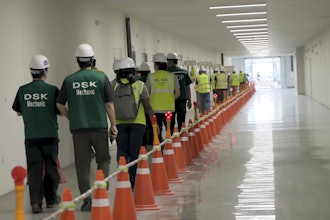There aren’t enough candidates to fill America’s manufacturing jobs and the situation only promises to get worse. In fact, a recent study conducted by the Accelerator Group determined that the state of Michigan alone will experience a shortage of 334,000 skilled workers by 2012. And according to the National Association of Manufacturers, four of five U.S. manufacturers struggled to fill jobs in 2003.
The problem is not brand new. However, its potential negative impact on America’s manufacturing viability grows daily as other countries vie for larger pieces of the global manufacturing pie. Their primary advantage? Highly trained employees and plenty of them. For example, China graduates over 350,000 new engineers a year. The U.S, just 65,000. Toyota just cited a poor pool of skilled workers as the reason they chose to build a plant in Canada instead of the U.S.
The shortage, though, is not the real issue here. It is symptomatic of a deeper problem: a decaying image of manufacturing that no longer connects with, and even dissuades, young people considering careers.
So what does resonate with them? Money. Benefits. Growth opportunity. The ability to be the brain, not the backbone. Yes, it reflects the world we live in today. If manufacturing wants to boost recruitment, it needs to compete on the same level and talk up the same opportunities as other industries trying to woo the same candidates.
The good news, the very good news, is that this is a case of perception versus reality. Manufacturing already delivers on money, benefits, career advancement, and mentally stimulating and engaging careers.
Today’s manufacturing employee earns an average of over $63,000, plus benefits including healthcare. Career growth often happens faster and along a more formalized path than you’ll find in many white-collar professions. And today’s manufacturers rely far more on brains than brawn. Computerized, factory automation has pretty much done away with the assembly line. Technologists and engineers who enter manufacturing are challenged with bottom-line business goals: improving productivity, decreasing downtime, eliminating costs while increasing quality assurance.
So how can manufacturing as an industry change how it’s perceived?
First, influence the influencers. Young high school and college graduates turn to parents, teachers and guidance counselors for advice on the age-old “What do you want to do with your life?” question. Convince the influencers that manufacturing is indeed a rewarding career and they’ll convince the recruits for you. It’s a strategy that works for the military and it will work for manufacturing, too.
Second, provide clear educational programs and curriculum that treat manufacturing as a legitimate profession — not a fallback plan for poor students. Manufacturing executives on the boards at State universities and colleges need to push for packaging coursework for “manufacturing majors and minors” and offering scholarships and graduate programs for students who intend to focus on manufacturing as a long-term career.
Third, it’s time for manufacturing to apply some innovation to how it packages and positions itself as a contemporary employer. Appeal to the individual ego by providing aspirational examples of technologists and engineers who are achieving professional goals. The Military did that with its Be All That You Can Be campaign. Avoid certain terms that minimize individuality such as “hourly wages” and anything to do with labor in general. It sends the wrong message.
These recommendations may seem objectionable to seasoned manufacturing employees who don’t want to give their world over to the priorities of today’s high school and college graduates. But as the old saying goes, it’s the fish, not the fisherman, who must like the taste of the bait.
Read Next
Perdue Farms to Cut Nearly 300 Jobs at Indiana Plant
September 15, 2025



















